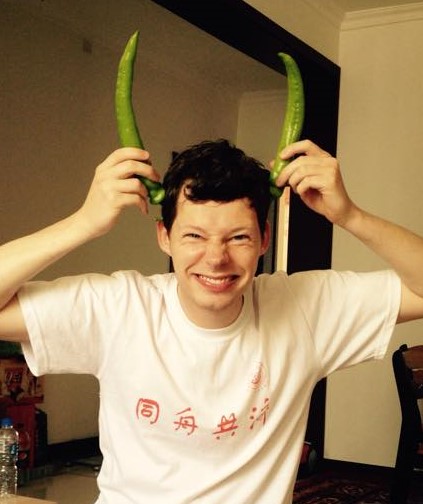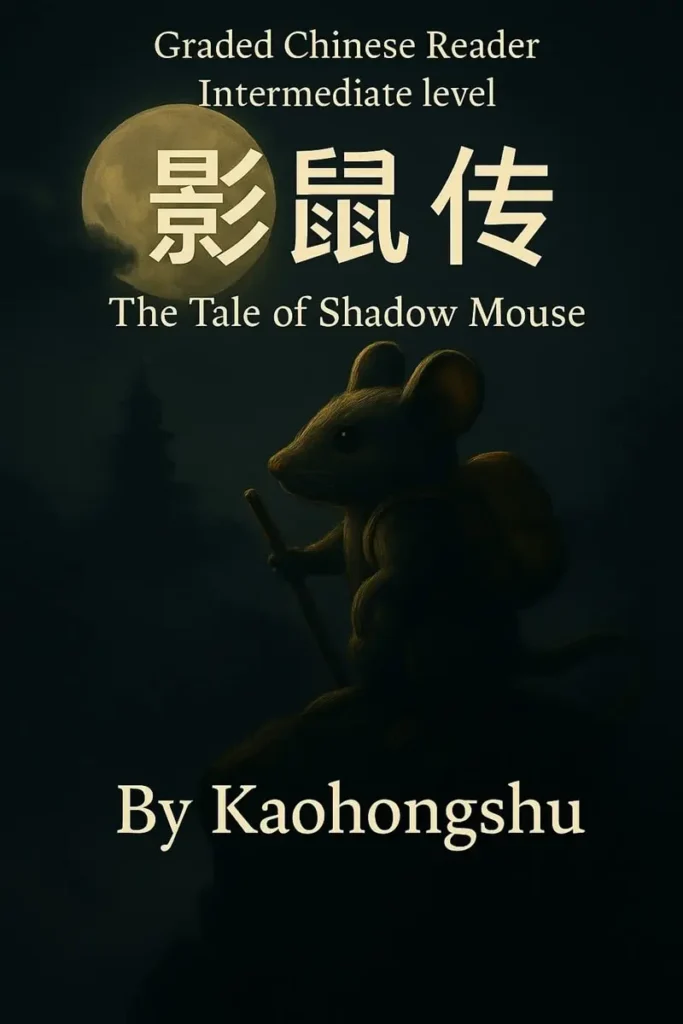The biggest obstacle to mastering Mandarin for many people is its writing system. In a previous post, I focused on deep-rooted bad practices surrounding the study of Chinese characters. A relevant topic, but there was no light at the end of the tunnel. So what does work? In my own quest to improve my command of Hanzi, I found two interesting approaches: one is the well-known “Chineasy method”, the other is the “Uncle Hanzi way”. This is what you can learn from them.
The “Chineasy Method”
Visual mnemonics
The Chineasy approach is to put Hanzi into a visual context and memorize them with the help of illustrations that depict the character’s meaning. Shaolan Hsueh, the entrepreneur behind Chineasy, managed to exploit this idea commercially better than anyone else. Chineasy’s impressive design and Shaolan’s smart marketing campaign even helped popularizing Mandarin and Hanzi abroad. For the first time, it seemed, someone had come up with an unique method for Chinese characters that makes them learnable for almost anyone.
Chineasy – a serious learning resource?
But is Chineasy really a “language learning system” as it says on Wikipedia? To what extent does it teach you to read and write Hanzi? It’s hard to ignore that some Mandarin teachers and other experts have pointed out some serious flaws:

- Chineasy teaches all characters as if they were pictographs. Pictographs are easy to explain (my teachers have been guilty of this kind of cherry-picking too), but unfortunately they only make up around 5% of all characters. This is misleading.
- These characters don’t necessarily match the most frequently used characters which is unpractical for learners.
- Chineasy mixes traditional and simplified characters for convenience. This is not best practice. Especially for beginners, it’s much less confusing to stick with either simplified or traditional characters.
- Chineasy overreaches when it calls itself a “learning method” or “system”. It’s not a system, it’s rather a learning technique put into practice. It reaches its limits pretty soon though.
Visual mnemonics can be helpful
That being said, the visual approach exemplified by Chineasy can be useful. Associating a certain image with a character or its individual components makes memorizing Hanzi less of a struggle. It all boils down to this: Chinese characters have to make sense when you learn them. Yes, Chineasy’s approach is quite random at large and disregards the composition and history of the character, but applying some form of visual mnemonics is much more effective than blindly memorizing meaning and stroke order, especially when you’ve just started out.

The “Uncle Hanzi Way”
Obsessed with the origin and history of Chinese characters
In the long run though, we shouldn’t stick with random images and stories. Instead, we should try to get the characters “right”. That means caring about their origin and history. Let’s discuss the second approach.
“Uncle Hanzi” is the nickname of Richard Sears, an American physicist, who has been obsessed with the origin and history of Chinese characters for most of his life. He created an online database of more than 96.000 ancient Chinese characters called hanziyuan.net.
In his own words: “At age 40, I got the idea that I needed to computerize the origins of Chinese characters so that I could sort out the crap from the truth. I started researching but did not get started actually doing it. At age 44 I had a near-fatal heart attack and after recovering, but not knowing when I might die, I decided I must get started.” At hanziyuan.net you can trace back the composition and meaning of almost any character to its origins as far as they are known. Take 家 (house) for example:
Getting back to the source
“Uncle Hanzi” is an extremely interesting case, because he doesn’t come from the field of sinology and seems to be a lone wolf fueled by a hardcore obsession with Hanzi. (Just imagine a sociologist investing 30 years of his life into die-hard quantum mechanics research). Sears obviously wasn’t satisfied with blindly memorizing characters or Chineasy-style mnemonics. He wanted to grasp the “logic” and understand the origins. After all, the ancient Chinese didn’t just “make them up” as they went along according to Sears.
He also argues that practically all the first characters would have been pictographs which evolved and became more abstract over time. In other words, what today seems abstract, used to represent something concrete which we should try to understand to make our lives easier. The case of 家 (a pig under a roof) illustrates this.
Of course, it’s going to slow us down when we take a history tour for each new character, but I’m convinced that the more solid our foundations are the easier it becomes to add new layers. But how to put the “Uncle Hanzi Method” into practice?
How Pleco and Outlier Linguistics can help

The dictionary app Pleco (partly) supports this learning method by breaking down each character into its components. That’s good for a start, but doesn’t give you the full story like the example of 名 shows. Its components don’t add up to its meaning (name), so there must be more to tell here.
For those who want to gain insight into the etymology of Chinese characters, there’s a practical solution called Outlier Linguistics. Their dictionaries help you understand the history of Chinese characters that most Mandarin teachers fail to explain. You don’t need to install another dictionary app by the way, because they come as add-ons for Pleco in a “Mini” and “Essentials” edition. For most people this is probably overkill, but for serious Hanzi learners quick access to etymological basics might well be the key to progress. This is how I see it: the more profound your understanding of Hanzi, the easier it becomes to grasp and memorize new characters. They’ll start to make sense.
The Outlier Essentials Edition should get you a long way:
- 2700+ characters as of newest update (plus regular updates until they reach 4000)
- Simplified and Traditional characters
- Detailed explanation for every character
- Stroke order for all 4000 characters
- Meaning tree for every character showing how different meanings relate to each other
- Ancient forms for all semantic components
The dictionary (meaning add-on for Pleco) looks like this:



Conclusion
The “Chineasy method” and “Uncle Hanzi’s approach” both have their merits. Putting characters into a visual context does help, just like developing a basic understanding of their origin and history does.
Actually, to zoom out for a moment: we’re not really talking about methods, but learning techniques linked to different levels of understanding and experience. Mandarin expert Olle Linge came up with 5 different levels of understanding Chinese characters which gives us something to hang on to. I added Chineasy and Uncle Hanzi in brackets. Most of us are somewhere in the middle of this scale:
- Inventing pictures that disregard composition and structure of characters (Chineasy)
- Creating stories and associations that obscure functional components
- Using superficial pictures while being aware of functional components
- Using superficial pictures and encoding functional components
- Etymologically correct mnemonics with no shortcuts (Uncle Hanzi)
I’d label myself with level 3, although it differs from case to case. I know I’m nowhere as good as I could be with serious studying. Taking some inspiration from Uncle Hanzi, I keep aiming for level 5. I do hope though that it won’t take me 30 years to get there!
What’s your take on Chineasy? Does it work for you? Do you think Chinese characters have logic like that can be understood if you study them long enough? Please feel free to leave a comment down below.
Further reading
- https://www.hackingchinese.com/5-levels-of-understanding-chinese-characters-superficial-forms-to-deep-structure/
- https://www.hackingchinese.com/are-simplified-characters-really-simpler-to-learn/
- https://www.sinosplice.com/life/archives/2020/04/01/challenges-to-character-understanding
- https://www.china-admissions.com/blog/uncle-hanzi-simplified-chinese-characters/
- https://hanziyuan.net/
Affiliate links
Disclosure: These are affiliate links. They help me to support this blog, meaning, at no additional cost to you, I will earn a small commission if you click through and make a purchase.

















I agree with you on Chineasy that it reaches its limits very quickly. A nice way to get people interested in Hanzi though! I, too, find Outlier useful. Worth the add-on and it’s a one-time payment ????
I totally agree with you. Chineasy’s method is quite misleading. It uses pictographs and associatie compounds as a bait to attract students which sooner than later will realize Chinese characters are much more than this. Exactly 95%, the total amount of pictophonethic characteres that are left out. And somehow I can’t help finding Chineasy’s approach too westernized and unfit for this important part of Chinese culture, with all the show, the TED talks and the merchandising. It’s like too big a presentation for such a weak idea. So, as a student I developed another similar method, called HanziBox, which shows graphically what the character really IS, what it is made of, instead of showing what it represents. It would be like looking at them through a pair of X-Ray glasses. You can see its components, each in their right place and respecting their shape and ethymological meanings, not forcing or twisting them like Chineasy sometimes does. This way I can cover the whole corpus of Chinese characters and not only the pictographs or the associative compounds which are used in Chineasy like candies to gain naive student’s attention. If you’re interested you can take a look at it here: http://www.hanzibox.com (it’s in Spanish). Best regards and congrats on your great blog.